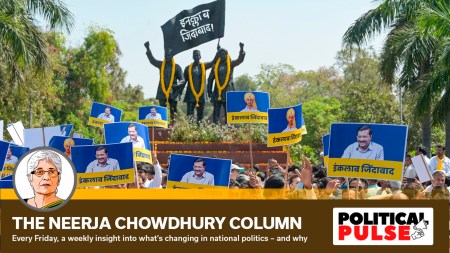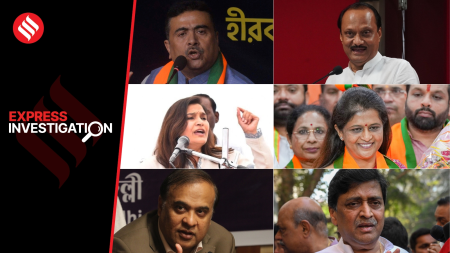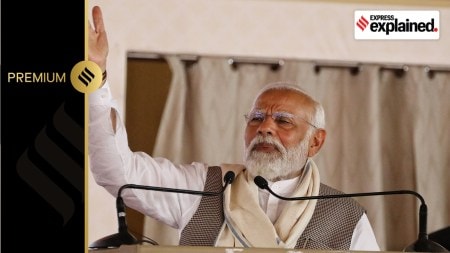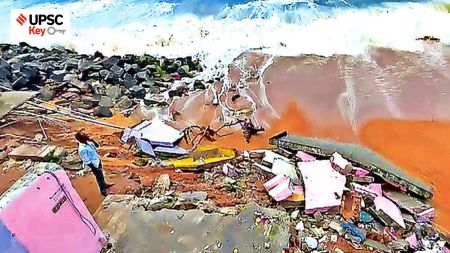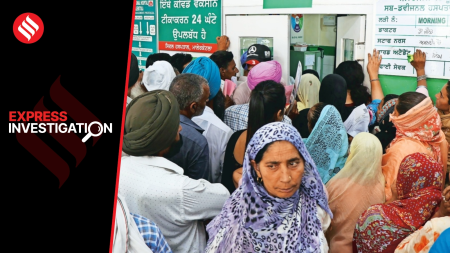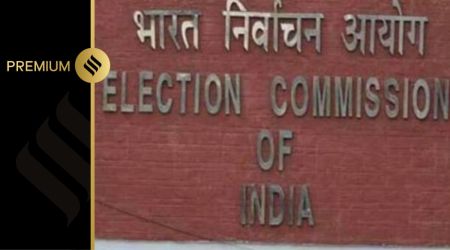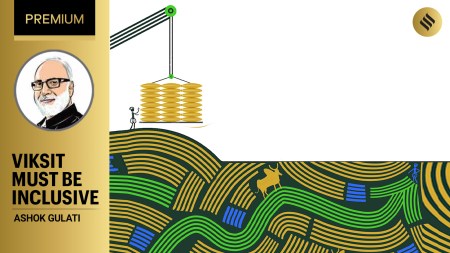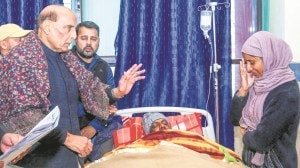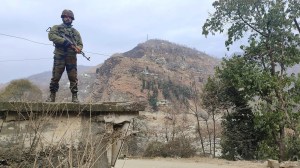- India
- International
How Mir Jafar’s tainted legacy still haunts his descendants
The use of the name ‘Mir Jafar’ in a manner similar to that of an insult or slander, still rankles, say his descendants, as the name of the former Nawab of Bengal comes up once again ahead of Lok Sabha election.
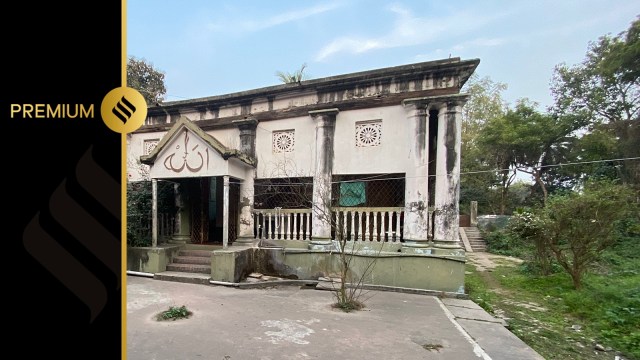 The house of a direct descendant of Mir Jafar in Murshidabad. (Express Photo: Neha Banka)
The house of a direct descendant of Mir Jafar in Murshidabad. (Express Photo: Neha Banka)“Why is this still not getting resolved? Haye Allah!,” says 62-year-old Syeda Tarat Begum, an 11th generation descendant of Mir Jafar, out of exasperation. Her uncle, Wakir Ali Meerza, walks around their small courtyard, watching in despair as monkeys chew away all the flowers the family painstakingly grows in their small plot of land. 88-year-old Meerza, a direct descendant of Mir Jafar, is a little exhausted and doesn’t talk much; only that the family have lost much of their wealth over the generations and how difficult a legal battle it is to get even some of it back.
With less than a month to go for the Lok Sabha elections, the campaigns by political parties have witnessed the unexpected resurrection of Mir Jafar, the commander-in-chief of Bengal Army under Siraj ud-Daulah.
Last month, a row erupted after Sanjeev Sanyal, a member of the PM’s Economic Advisory Council, blamed the people of Bengal for “poverty of aspiration”.
“The first time when he (Jyoti Basu) got elected, he had already carried out the Marichjhapi massacre… The question is, why did they keep getting him back despite his lack of performance? Some part of it was, of course, electoral malpractice. Booth capturing was converted into an art form. But I would argue that even more important than that was a poverty of aspiration,” he said in a podcast interview.
The Trinamool Congress (TMC) condemned Sanyal’s remarks, calling him “modern-day Mir Jafar”. “The hate spewing Bangla-Birodhis of @BJP4India have crossed all lines of decency! PM @narendramodi’s Chief Economic Advisor and a new addition to the list of modern-day Mir Jafars, Sanjeev Sanyal openly criticised the glorious culture of Bengal by accusing us of having a “Poverty of Aspirations”, making a complete fool of himself! Following the footsteps of his Bangla-Birodhi overlords of the BJP, he mocked our cultural icon Mrinal Sen and the prolific culture of Kolkata, the city of joy,” read a post by the TMC on ‘X’.

The use of the name ‘Mir Jafar’ in a manner similar to that of an insult or slander, still rankles, say his descendants, who live in Murshidabad and Kolkata.
Several weeks before the controversy erupted, on a warm February evening, indianexpress.com sat with some of Jafar’s descendants in Murshidabad to talk about the legacy that the family continues to live with. They say they are tired of the many times their ancestor’s name continues to come up in conversations and interviews, but particularly in a negative context, and they firmly believe that the Nawab of Bengal has been unfairly maligned over the course of history.
Professor Bimal Kanti Ghosh, a retired academic, who previously taught at Jadavpur University’s Department of History, says “Mir Jafar was the middle man and this is documented”. “Facts are facts. There can be no denial of this… The family does not know historical facts very well.”
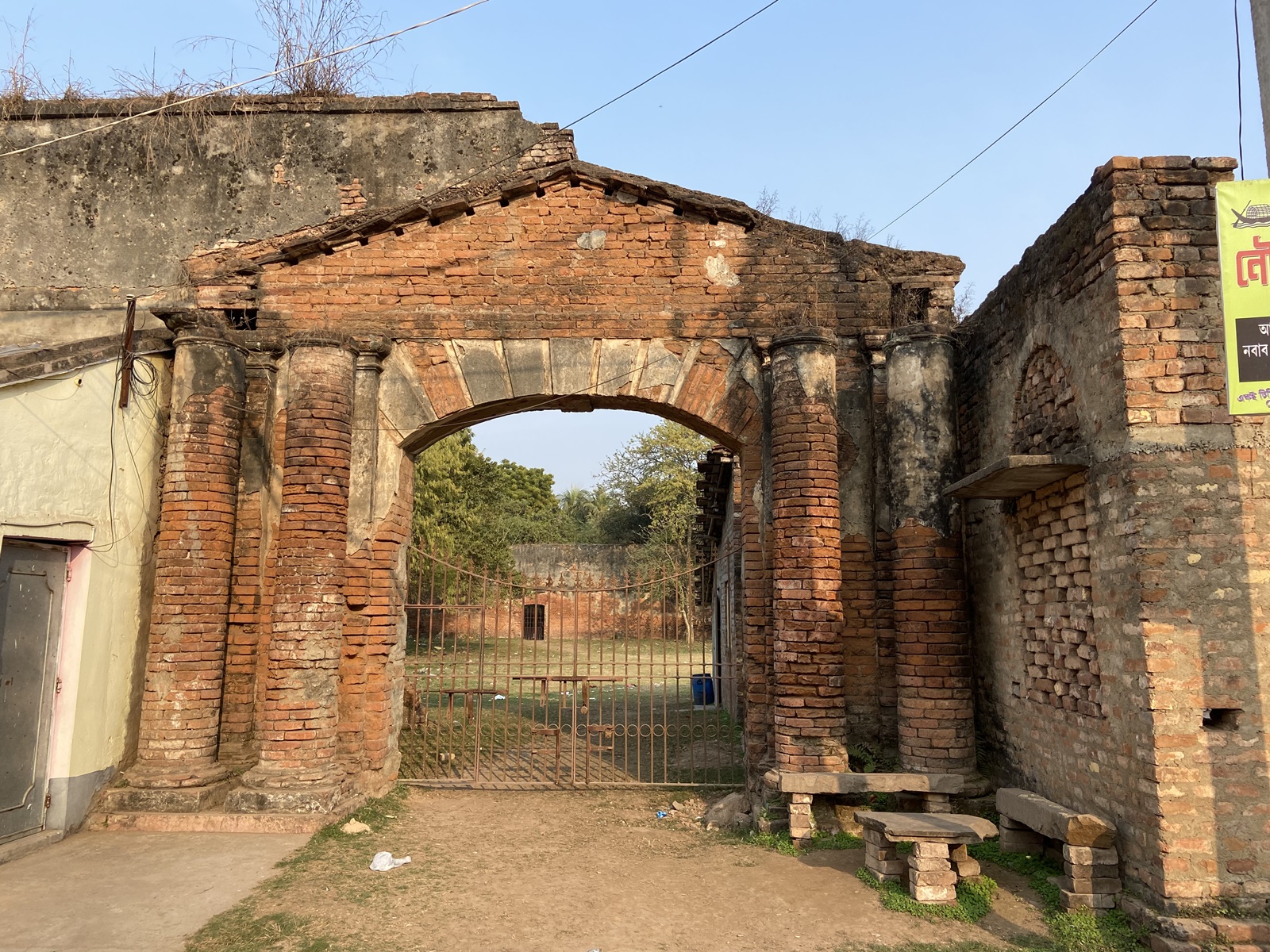 A brick wall and wrought iron gate behind which descendants of Mir Jafar still live. (Express Photo: Neha Banka)
A brick wall and wrought iron gate behind which descendants of Mir Jafar still live. (Express Photo: Neha Banka)
‘Traitor’s Gate’
A six-minute drive from where the descendants now live is the Namak Haram Deorhi, or the ‘Traitor’s Gate’, the former residence of Mir Jafar. Its present name is the most commonly used identification, although it also goes by two other names — the Jafarganj Deorhi and Jafarganj Palace.
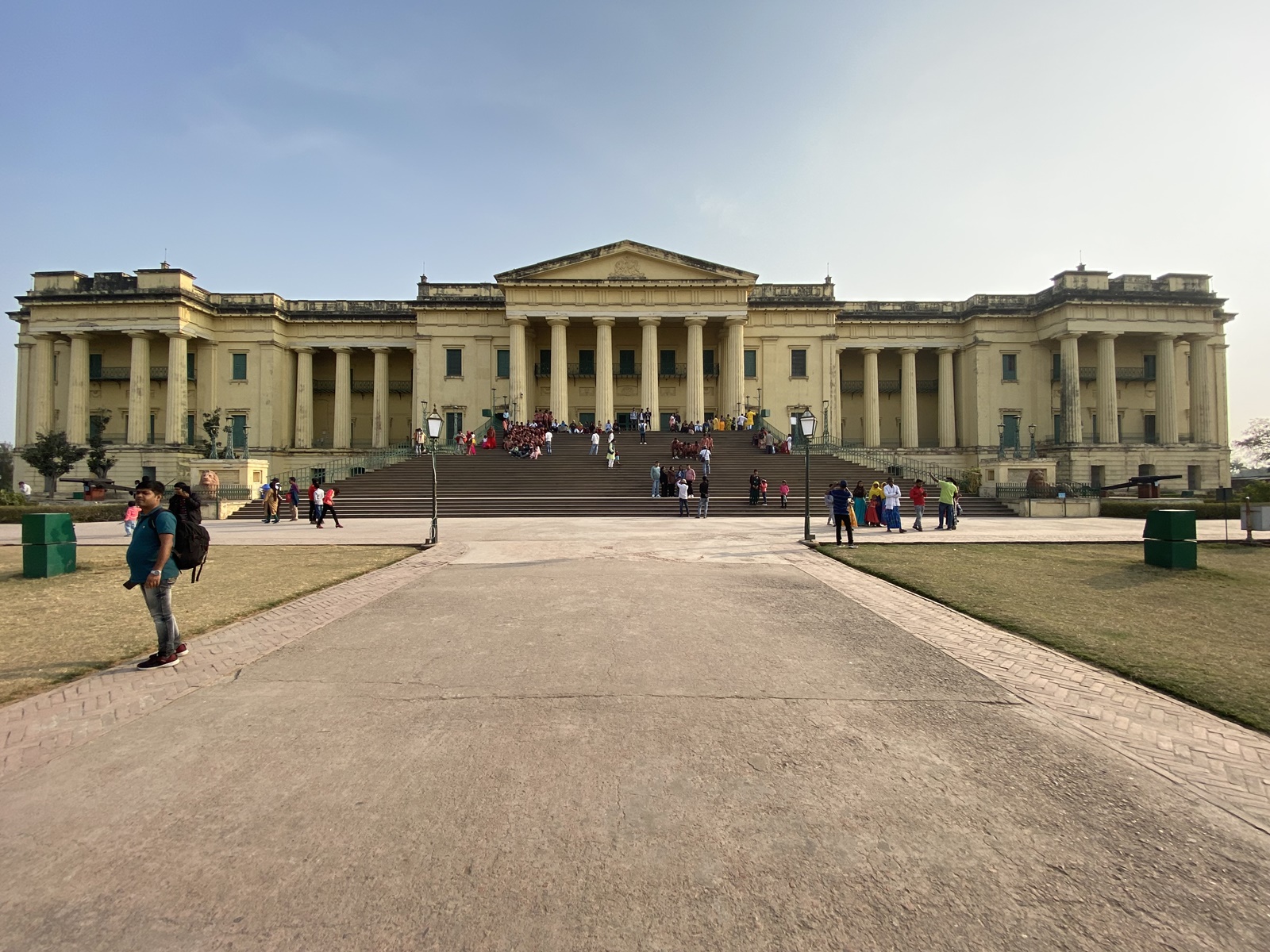 Hazarduari Palace in Murshidabad, West Bengal. (Express Photo: Neha Banka)
Hazarduari Palace in Murshidabad, West Bengal. (Express Photo: Neha Banka)
Some family members from the direct line of descent of Jafar live a stone’s throw from the Hazarduari Palace, in the middle of crumbling palaces, on land that was once a part of expansive gardens but is now so overgrown that it resembles untamed jungles.
“What possessions will we have of our ancestors? Everything that remained is now in the Hazarduari Palace. I go like a tourist to see our ancestor’s belongings in the palace these days,” says Meerza. While the family still has some belongings and documents passed down over generations, objects of financial and historical value have largely become a property of the Indian government.
“Over the years, I have never had to purchase a ticket to see Hazarduari, but I think I may have to now. I also worked there for some time because of the legacy. But changes are happening and it’s all unwritten. There are too many restrictions in the palace now,” says Meerza.
While previously, the museum staff at Hazarduari knew the family well and never imposed any restrictions on them when they wanted to stop by the palace, Meerza says that many administrative changes have occurred over the past few years.
The Nawab of Bengal
Mir Jafar Ali Khan was the Nawab of Bengal from 1757 to 1760 and again from 1763 to 1765. He was an Arab by ethnicity and was born sometime in 1691.
His association with Bengal occurred through marital ties. His paternal aunt, Begum Sharfunnisa, was the wife of Nawab Alivardi Khan of Bengal who ruled over the province between 1740 to 1756. Following the death of Alivardi Khan, in the absence of a son, the successor to the throne of Bengal was his daughter’s son, Siraj ud-Daulah, who was only 23 years old at that time.
In many ways, trouble started when the young Siraj ud-Daulah ascended the throne. There were too many high-ranking court officials and relatives who resented his elevation in status and the power that came with it. The changes that Siraj ud-Daulah brought to the workings of the court fostered resentment amongst those who stood to lose the most. Among these individuals was Mir Jafar, who was removed from the post of the paymaster of the Bengal army after Siraj ud-Daulah discovered that he was a disloyal servant. Next, was Ghaseti Begum, the Nawab’s maternal aunt, a wealthy woman in her own right with the power to pull strings in the royal court, so much so that Siraj ud-Daulah believed it was necessary to banish her from his court and keep her confined. Also included in this group was Jagat Seth, a wealthy merchant and banker who stood to lose financially from the administrative changes that Siraj ud-Daulah was bringing about, along with other merchant bankers who were Seth’s cohort.
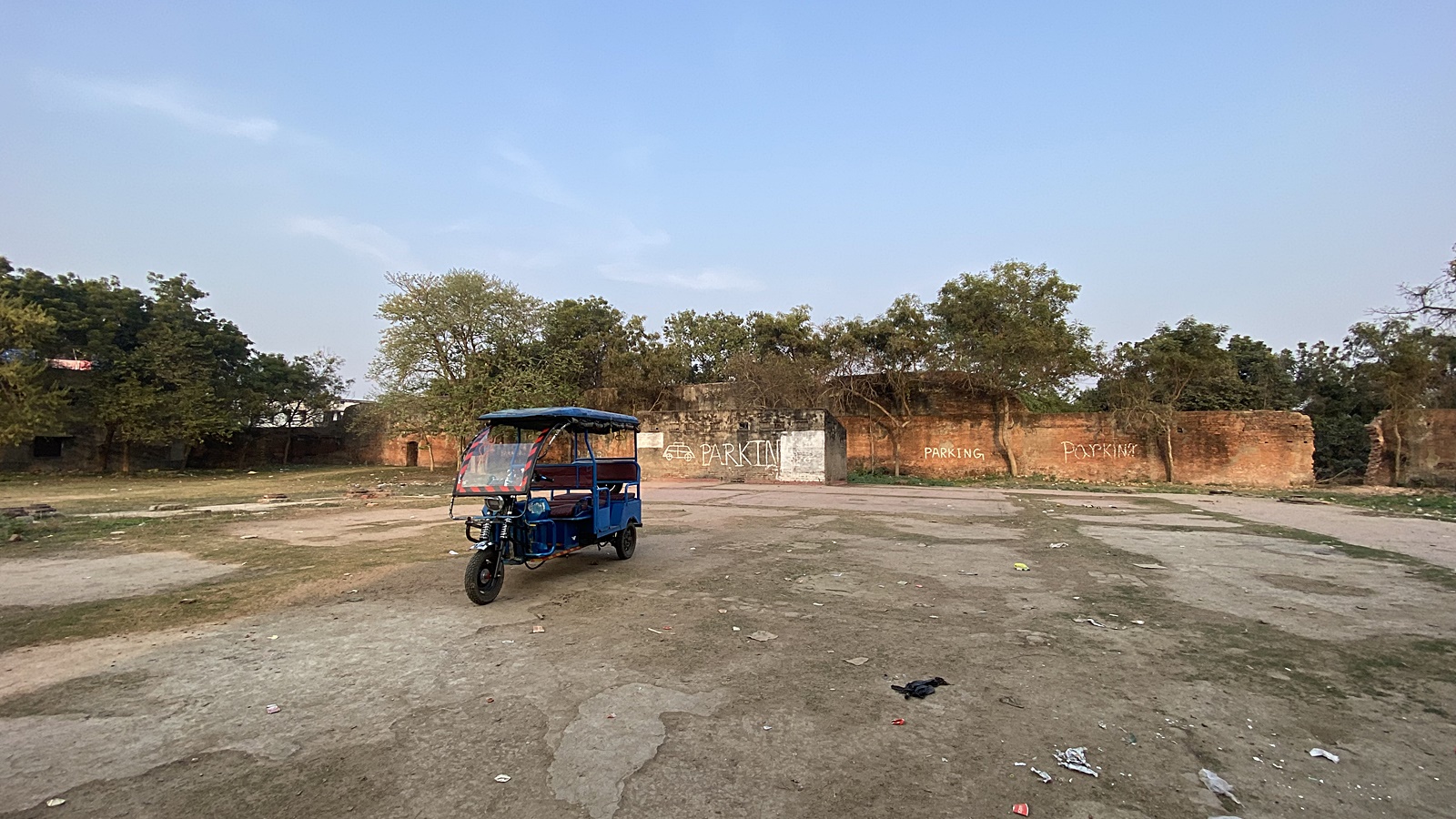 An ancient brick wall near Hazarduari behind which is the home of the direct descendants of Mir Jafar. (Express Photo: Neha Banka)
An ancient brick wall near Hazarduari behind which is the home of the direct descendants of Mir Jafar. (Express Photo: Neha Banka)
In 1757, when the British decided to overthrow Siraj ud-Daulah, Mir Jafar, along with a group of powerful merchant bankers and other court officials, joined hands with the British East India Company.
The memoirs of William Watts, who was an official with the British East India Company, provide some insight into the last days of Siraj ud-Daulah’s rule as well as how the conspiracy unfolded. Like most Englishmen who arrived in the Indian subcontinent, Watts had humble origins as the son of a school teacher. His well-connected wife helped him secure a job as the chief of the Cossimbazar factory, a trading post of the British in what is modern-day Murshidabad. His entry into the court of Siraj ud-Daulah occurred when Robert Clive made him a representative of the Company. Working under the instructions of Clive, Watts was tasked with a confidential assignment: to find a replacement for Siraj ud-Daulah, by exploiting the fractures within the Nawab’s court.
This was a build-up to the Battle of Plassey in June 1757, that secured the victory of the British East India Company over Siraj ud-Daulah and his French allies, helmed by Clive and supported by Mir Jafar. The Battle of Plassey marked the beginning of British rule in India. Before this, the British had only been trading in India.
Watts writes about the end of Siraj ud-Daulah’s life, at the hands of Muhammadi Beg, a co-conspirator, under orders from Mir Jafar’s son, Miran: “It is certain that he was in a very low and distressed condition, with hardly any cloths upon his back… Be that as it will, the making him (Siraj ud-Daulah) prisoner was regarded as an event of great consequence to the new Suba (Mir Jafar). He was no sooner informed of it, than he committed that Prince to the custody of his son (Miran), recommending to him earnestly in public, to take the surest methods to prevent his escape; but at all events to preserve his life. The young man (Miran), instead of paying that respect which was due to his father’s commands (Mir Jafar), no sooner had him in his hands, than he caused him to be privately put to death…”
“Such was the end of Suraja Dowlat, in the prime of his youth, being at the hour of his death scarce twenty-five years of age,” writes Watts. The young Nawab had ruled for only 15 months.
In an introduction to Watt’s memoirs, Professor Ghosh writes that “a conflict between the Nawab and the English became inevitable due to the political and commercial policy of the English Company which contributed to a great extent to the economic and political decline of Bengal”.
Mir Jafar, Siraj ud-Daulah, and Indian elections
Back in modern-day India, another controversy began brewing with the TMC fielding the firebrand sitting MP Mahua Moitra from the Krishnanagar seat and the BJP deciding to field ‘Rajmata’ Amrita Roy, belonging to the erstwhile Krishnanagar royal family. Prime Minister Narendra Modi called up Roy — a conversation the BJP immediately made public — and told her he was working to ensure that the money “looted from the poor people of West Bengal” and attached by the Enforcement Directorate (ED) will be returned to them.
Reacting to the conversation, Moitra, in a post on X, wrote, “Krishnachandra Roy’s Samaj-sudhar works used to be taught to us” – Hon’ble PM @narendramodi tells BJP Krishnanagar candidate/ Confused between Social Reformer Raja Rammohan Roy & Krishnachandra? Bad homework, Sir . Tch. Tch.”
Moitra was referring to the royal family of Raja Krishnachandra Roy from Nadia. Amrita Roy is married to Soumish Chandra Roy, a descendant of the erstwhile Raja Krishnachandra Rao. Although her title is not officially recognised, like of many erstwhile royals, Roy uses the title of ‘Rajbari’r Rajmata’, or the Queen Mother of the Royal Palace of Krishnanagar.
There is documented evidence that Raja Krishnachandra Roy was among the group of wealthy merchants, landowners and palace officials that included Mir Jafar, Jagat Seth, Omichand and others, who conspired with the British to overthrow Siraj ud-Daulah. Some historians believe that the deceit by the group was not carried out with an intention to establish British rule in the Indian subcontinent, but rather to build their own fortunes and establish and consolidate power.
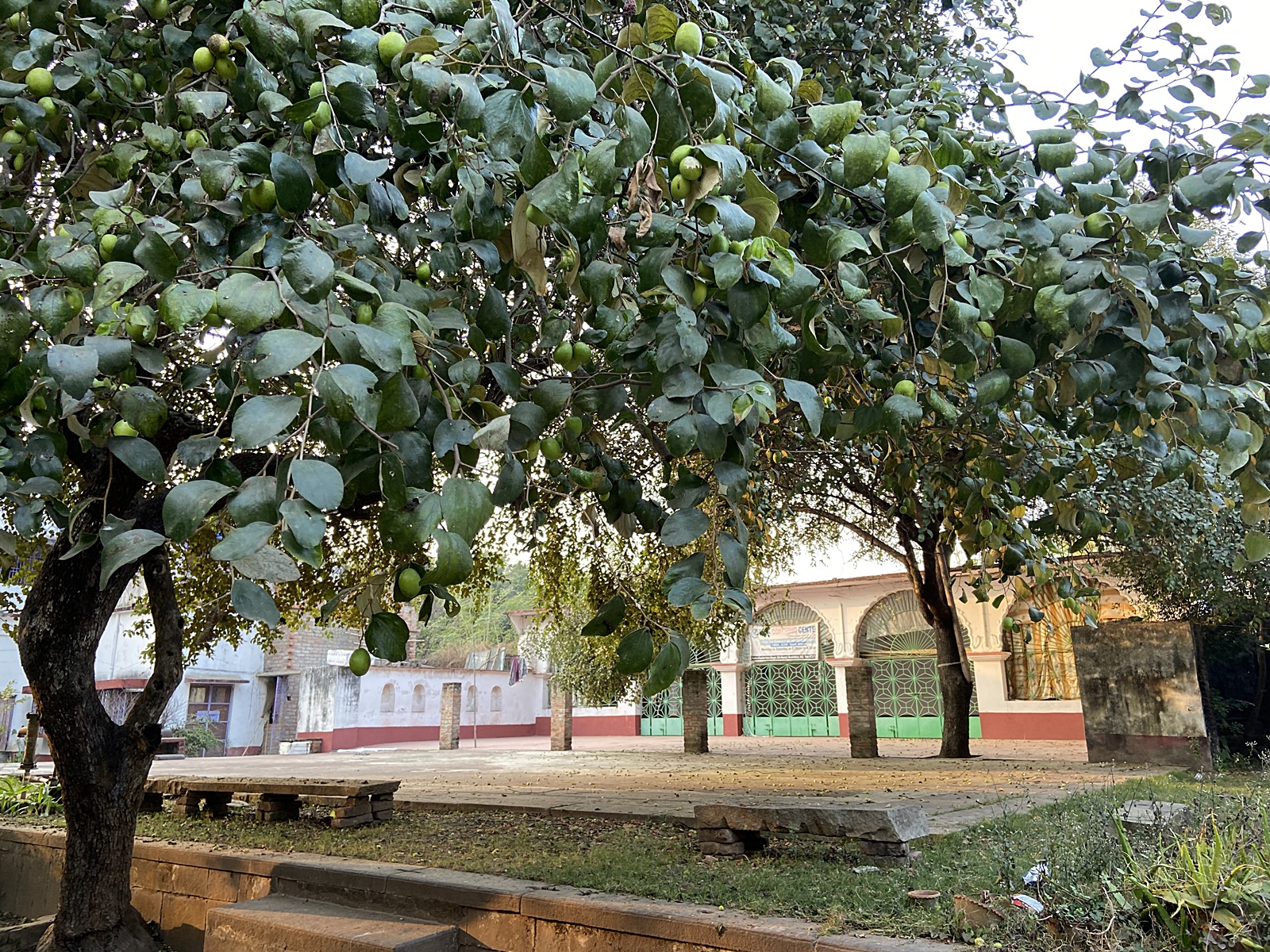 An Indian jujube tree in the courtyard of the home of the descendants of Mir Jafar in Murshidabad. (Express Photo: Neha Banka)
An Indian jujube tree in the courtyard of the home of the descendants of Mir Jafar in Murshidabad. (Express Photo: Neha Banka)
In his book, A Story of Ambivalent Modernization in Bangladesh and West Bengal: The Rise and Fall of Bengali Elitism in South Asia, author Pranab Chatterjee writes that when Krishnachandra Roy befriended Clive, it was the start of a relationship that would not only make Roy a wealthy man, but also end up saving his life. Sometime in the 1760s when the then Bengal Nawab Mir Qasim ordered for Krishnachandra to be executed, Clive overruled Mir Qasim’s order, and gifted Krishnachandra five canons, the title of ‘maharaja’, and the zamindari of the area of Krishnanagar.
“The role of Krishnachandra Roy in history was negative. He joined hands with the conspirators and received huge sums of money from the English. The rajbari was built with that wealth. There is no space to praise him,” says Prof. Ghosh.
Referring to this incident, the TMC posted on X: “1757: Maharaja Krishnachandra conspired with Mir Jafar, Jagat Seth & Umi Chand and sold himself out to the British like a spineless traitor… 2024: ‘Rajmata’ Amrita Roy, his family member, has shamelessly embraced the Bangla-birodhi (anti-Bengal) BJP, sealing a pact to once again deceive the people of Bengal… The faces may have changed but their JOMIDARI (zamindari) still persists… They were not trustworthy then, and they sure won’t be now.”
The references to Mir Jafar are not limited to West Bengal. In March 2023, the BJP had called Congress leader Rahul Gandhi the “present-day Mir Jafar of Indian polity” and accused him of travelling overseas to seek help from foreign forces to become a modern-day ‘Nawab’ in India.
In the conversations surrounding the political history of Bengal in the run-up, the version of pre- and post- Independence “history” being shared for public consumption, depends on who does the narration. Back in Murshidabad’s ruins, the descendants of Mir Jafar just wish that people would forget about him.
Apr 05: Latest News
- 01
- 02
- 03
- 04
- 05


